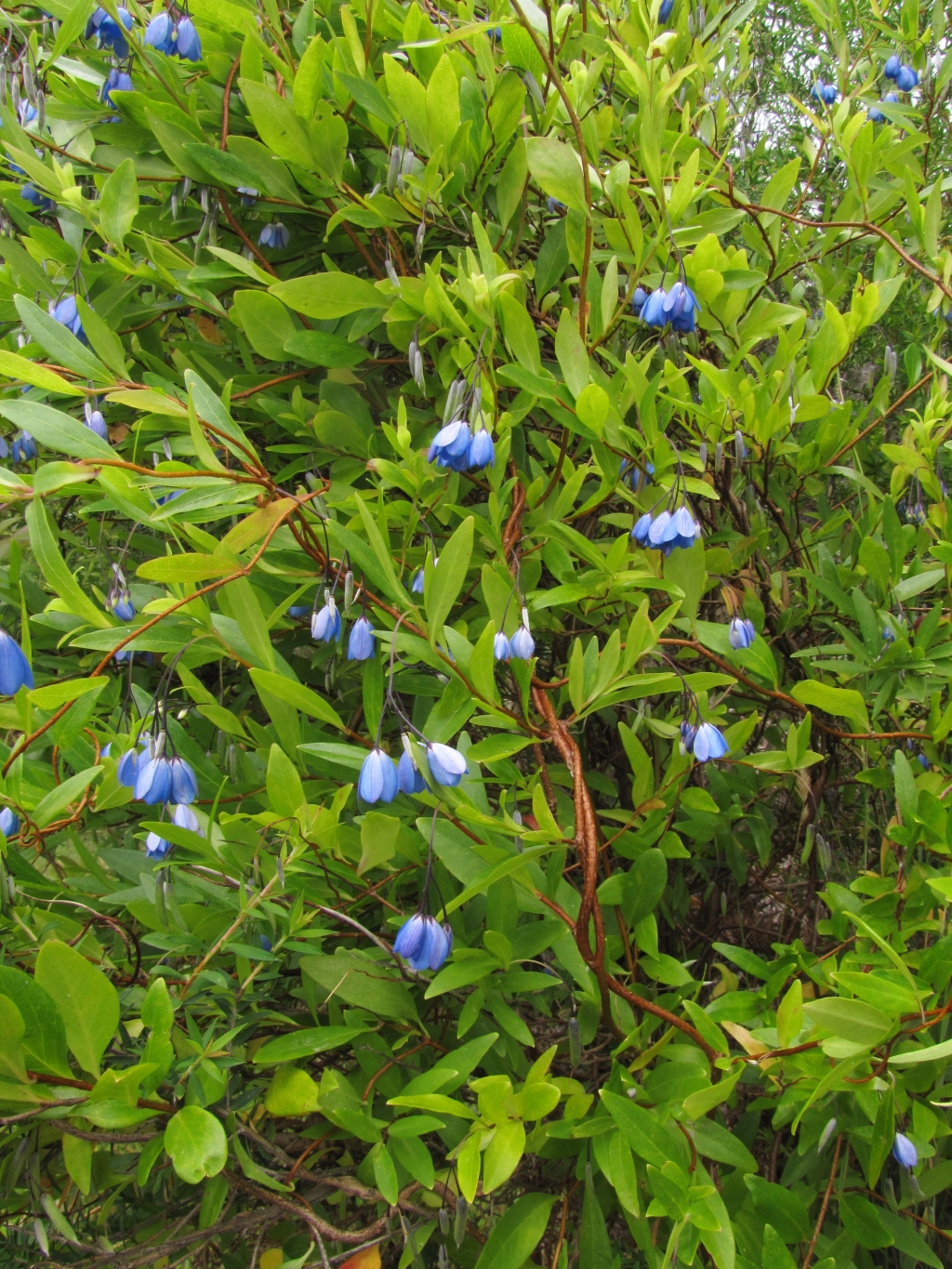Billardiera fusiformis
Labill.Vigorous twining shrub to c. 2 m high, young stems more or less shining, reddish-brown. Leaves narrowly lanceolate to oblanceolate, 20–50 mm long, 5–18 mm wide, glabrous, shortly petiolate. Cymes usually 2–5-flowered; pedicels slender, c. 1–2 cm long; sepals ovate, 2–3 mm long, acute, slightly pouched at base, dark blue or bluish-green; petals obovate, 8–12 mm long, obtuse, usually shortly apiculate, bright blue (rarely pink or white); stamens 4.5–6.5 mm long, anthers slightly longer than filaments; style subequal to stamens; ovary pubescent. Berry 2–3.5 cm long, green to blackish, firmly succulent; seeds numerous, flattened-ellipsoid, 2–3 mm long, brown, tuberculate, embedded in fleshy, somewhat viscid pulp.
Wim, GleP, VVP, GipP, OtP, WaP, Gold, CVU, GGr, DunT, EGL, HSF, HNF, OtR, Strz. A hardy, commonly cultivated twiner, escaping via bird-dispersed seed or garden refuse into native bushland in several outer Melbourne suburbs, near-coastal areas on the Mornington Peninsula (Dromana, Hastings area) and in the east at Bemm River.
This widely cultivated species was previously known as Sollya heterophylla Lindl. Broader leaved plants that lack long sagittate anthers are sometimes regarded as a distinct species, Billardiera heterophylla (Lindl.) L.Cayzer & Crisp. These plants are thought to have a higher tolerance of saline conditions. However, broad and narrow leaved forms are not readily discernible, and only B. fusiformis is recognised in Victoria.
Walsh, N.G.; Albrecht, D.E. (1996). Pittosporaceae. In: Walsh, N.G.; Entwisle, T.J., Flora of Victoria Vol. 3, Dicotyledons Winteraceae to Myrtaceae, pp. 526–539. Inkata Press, Melbourne.
 Spinning
SpinningCayzer, L.W.; Crisp, M.D.; Telford, I.R.H. (2004). Cladistic analysis and revision of Billardiera (Pittosporaceae). Australian Systematic Botany 17(1): 83–125.



